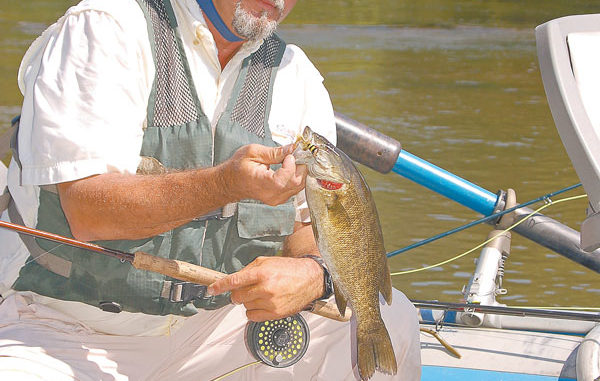
Western North Carolina rivers are smallmouth havens for anglers with a sense of adventure.
Last July, when West Jefferson’s Ben Lucas and I glimpsed the deep-water ledge 50 yards downstream from us on the South Fork of the New River, we knew exactly how to double-team it.
We paddled down a shoot on the left side of the river, pivoted the canoe and entered the current break below the ledge. Lucas tossed a Rebel Pop-R at the base of the ledge, while I went deep with a 5-inch, soft-plastic jerkbait.
Lucas scored first when a quality smallmouth bass smashed his topwater bait, but a few seconds after he landed his fish, a nice brown bass engulfed my bait. After some powerful runs, I landed the 15½-incher — just one of
many good fish we caught on a float from Boggs Bridge
to NC 88 Bridge.
The next day, we floated the New from the confluence of its South and North Forks to Mouth of Wilson, Va. The baits were different — buzzbaits and crankbaits — but the results were similar: more quality smallmouth bass.
For fishermen who love to float rivers for smallmouth bass, they can certainly do so throughout the year. But the best time is surely the summer, when warm weather, topwater and sub-surface action and aggressive fish combine to create memorable days afloat.
North Carolina has some fine smallmouth rivers and floats, with the New, the South Fork of the New, the French Broad and the Nolichucky among the best.
There’s little debate that the New River, which flows through North Carolina, Virginia and West Virginia, is the best smallmouth river in the South. The first 33 miles of the main stem of the New wind back and forth between Alleghany County and Grayson County, Va. Thanks to a reciprocal license agreement between the two states, North Carolina residents need not purchase an out-of-state license until they drift past Baywood, Va.
Four floats that include Tarheel State are particularly good:
• Confluence of the North and South Forks to Mouth of Wilson, Va. (five miles);
• Mouth of Wilson to Bridle Creek (six miles);
• Bridle Creek to Independence, Va. (10 miles);
• Independence to Baywood, Va. (12 miles).
Readers should be aware that the Bridle Creek trip features some rapids, namely the Class III Penitentiary Shoals, and each float presents Class Is and IIs. But one of the traits of these trips that makes them so worthwhile, specifically during the summer, is the well-aerated water, which results in active fish even during the hottest summer days.
Lucas, stewardship coordinator for National Committee for the New River (NCNR) in West Jefferson, maintains that each of the four has much to recommend it, but several excursions do stand out.
“My favorite is probably the Bridle Creek one, because the NCNR and other conservation groups have worked to put over a thousand acres under conservation easements there,” Lucas said. “But I also like this trip because it has numerous rapids, which tend to concentrate active fish. Another favorite is the Confluence float, especially its boulder gardens; and the Independence float is known for its deep-water ledges (that) draw big smallmouths.”
Lucas relies on two soft-plastic baits, three hard-plastic ones and buzzbaits.
“My favorite soft-plastic bait is a YUM Dinger, rigged Texas-style with a 2/0 hook and 1/6th-ounce bullet sinkers,” he said. “The New has bigger bass, so I go with 4- and 5-inch Dingers, but with 3-inch ones on the South Fork.”
When bass are aggressively chasing baitfish, Lucas opts for 3-inch grubs on an eighth- or quarter-ounce jigheads and Rapala X-Raps; when a topwater bite exists, he turns to Heddon Tiny Torpedoes, Rebel Pop-Rs, and buzzbaits.
“Tiny Torpedoes and Rebel Pop-Rs are classic river smallmouth topwaters,” he said. “but a buzzbait brought back through the shadows is a great choice, too.”
The South Fork of the New is just a downsized version of the New, both in width, rapids, and water volume. Although smallmouths aren’t quite as big as in the main stem of the river, plenty of nice bronzebacks call it home, and its 40 or so miles all have quality bass habitat.
Jed Farrington of Zaloo’s Canoes in Jefferson said numerous floats along the South Fork are well-populated with smallmouths. Among the better ones are:
• NC 163 to SR 1159 (eight miles);
• SR 1159 to NC 88 (six miles);
• NC 88 to Wagoner Rd. (five miles);
• Wagoner Rd. to US 221 (11 miles);
• US 221 to Kings Creek Rd. (7.5 miles).
Bob Bamberg, executive director for the Alleghany County Chamber of Commerce, said that as part of the New River State Park system, the Wagoner Rd. and US 221 access points offer canoe-in campsites, fire rings and picnic tables, all of which are quite popular with river voyagers.
Provided water levels are normal, you’ll encounter nothing more daunting than the occasional Class II rapid, and the numerous Class Is and riffles will help send you on your way at a good clip.
Last summer, I had the pleasure of fishing the Nolichucky River for the first time in several years and was delighted with the superb smallmouth action. Floating with Spruce Pine’s Rivers Edge Outfitters, I caught plenty of smallies in the 12- to 15-inch range. When fishermen refer to the Nolichucky, they are often talking about its main tributary as well — the North Toe.
“Unlike most smallie rivers, the North Toe/Nolichucky has a good population of large smallies, with many pushing 20-plus inches,” said Joe Street of Rivers Edge. “This is one of the top smallmouth fisheries in the Southeast.”
Street said the North Toe provides numerous half-day floats, among them Roses Branch Road to the Rt. 1314 bridge, Rt. 1314 to the Rt. 197 bridge, Rt. 197 to the Green Mountain Rd. Bridge, and Green Mountain Rd. to the next bridge on the same road upstream from where Brummett Creek enters. On the Nolichucky, the 7-miler from Huntdale to Poplar stands out.
“The Huntdale float offers some of the most scenic fishing in Western North Carolina,” Street said.
The same topwater lures Lucas recommended for the New and South Fork will perform well on the Nolichucky, but Street encourages fishermen to bring along their fly rods and try No. 6 yellow, chartreuse, and black polka-dot poppers. For sub-surface action, he recommends Nos. 6 and 8 Clousers.
A generation ago, the French Broad was infamous for its pollution; today it’s famous for its burgeoning population of smallmouth bass.
“The French Broad fished really well the summer of 2010, and I expect it to be even better this summer,” said outfitter Kevin Howell. “That’s because the river had really good spawns in 2008 and 2009, so I look for those fish to really be coming on in 2010 and beyond.”
Howell said anglers can undertake numerous excursions in the Asheville area. Among the better ones are Glenn Bridge to Bent Creek (3½ miles), Hominy Creek to the Asheville Waste Paper Plant (4½ miles), Alexander Park to Walnut Island (three miles), Walnut Island to Ivy River Bridge (4½ miles), Redmon Dam to Barnard (six miles), Barnard to Hot Springs (eight miles), and Hot Springs to Paint Rock (seven miles).
Howell emphasizes that two overlooked smallmouth destinations exist in the southwestern part of the state.
“The lower end of the Tuckaseegee below Dillsboro Dam has about 15 miles of fine water,” he said. “The river is an especially good destination whenever other streams are blown out … because the river’s flow is dam-controlled, so the Tuckaseegee is clear and fishable most of the time and is almost always the first stream in the area to clear when it does become muddy.”
Howell said most of the smallmouths in the river run between 10 and 16 inches. As a bonus, fishermen will also tangle with the odd trout or two. The two most popular trips are:
• Dillsboro Dam to Ella (7½ miles);
• Ella to Bryson City (7½ miles).
The second possibility is the Little Tennessee River, Howell said.
“While the Tuckaseegee is the last to become muddy, the ‘Little T’ is the first to get dirty,” he said. “A great thing about this river is that much of it flows through the Nantahala National Forest, so a lot of the Little T is very scenic.”
Howell that most people fish the Needmore Game Lands tract, which covers 27 miles of the Little Tennessee; a variety of trips are possible.

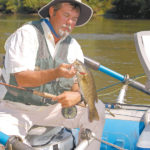
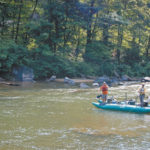
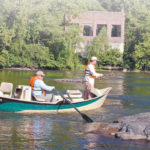
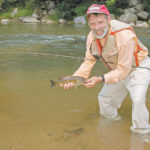
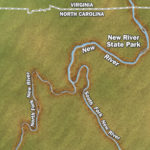
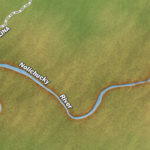
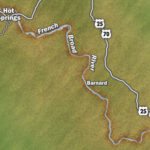


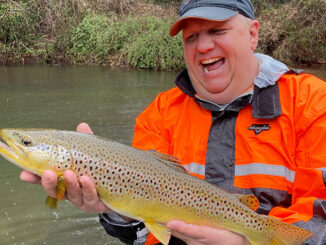
Be the first to comment